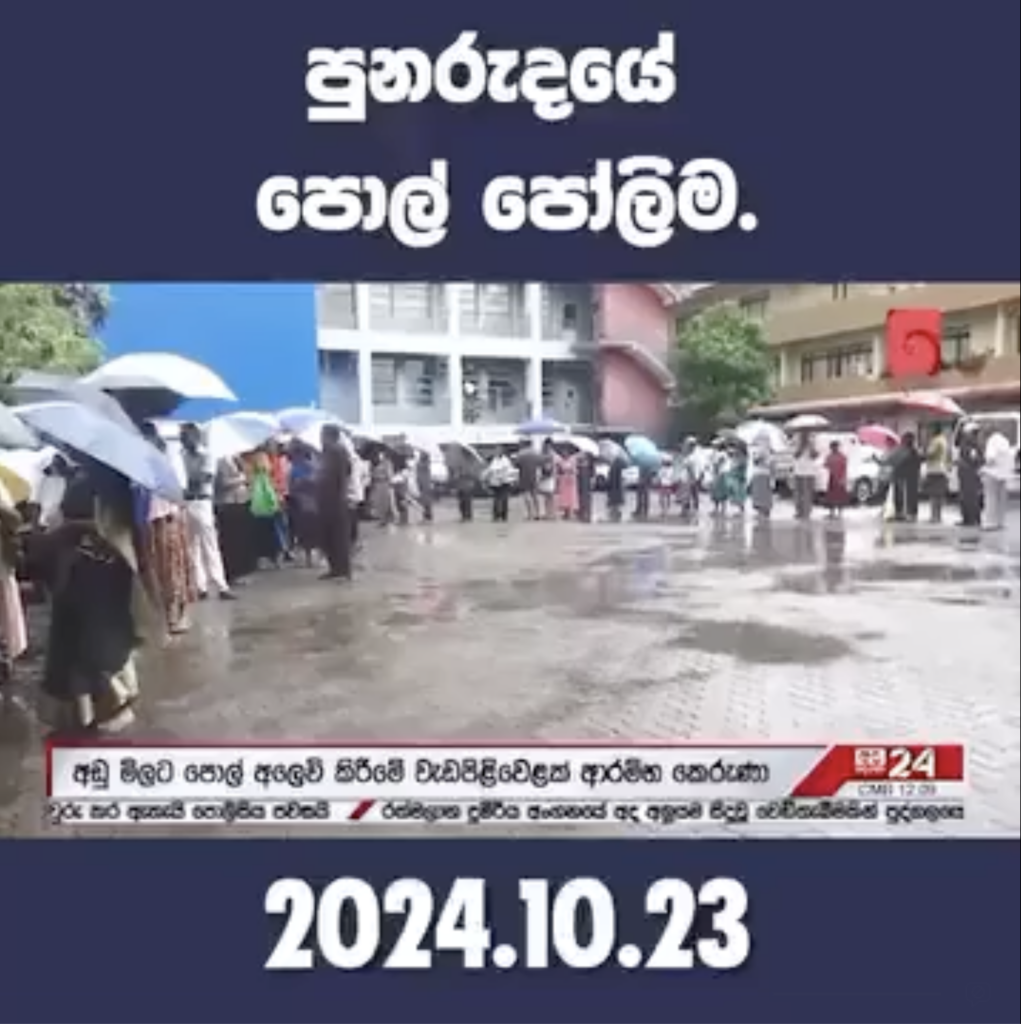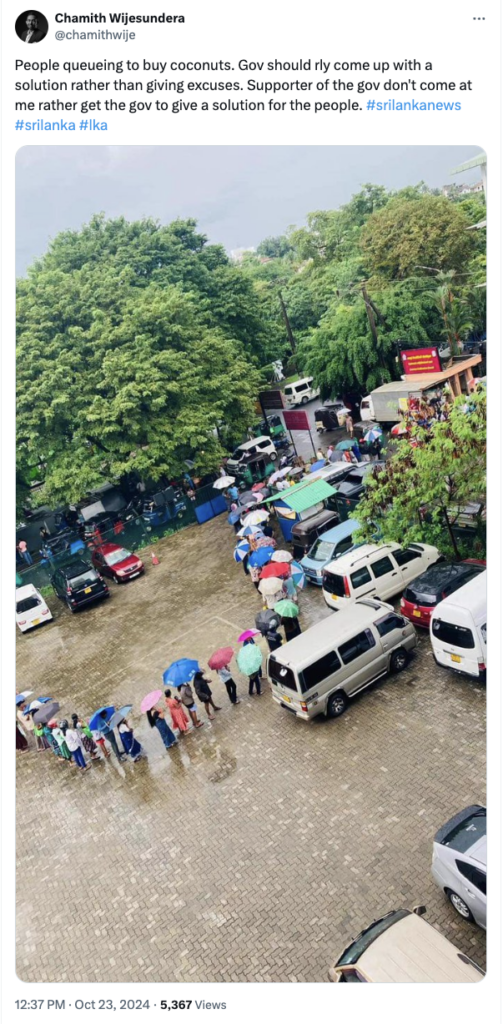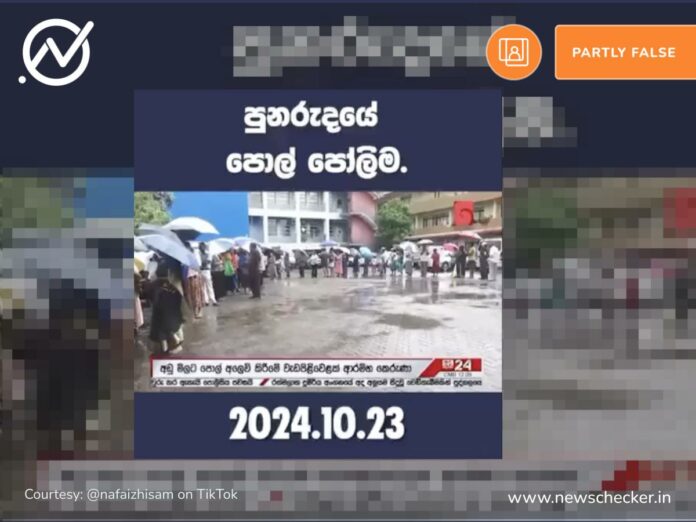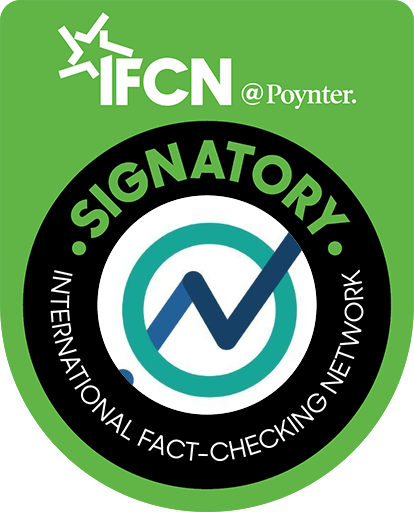Claim: The low supply and therefore high retail prices of coconuts in certain areas of Sri Lanka are due to a policy implemented by the newly appointed Government led by the NPP/JVP.
Fact: This claim is partly false. Low supply and high retail prices of coconuts are due to the lack of fertiliser and weather conditions.
Several social media posts show photographs and video footage of people lining up in long queues for coconuts outside the Coconut Cultivation Board in the Western province of Sri Lanka since October 23, 2024. The posts blame the newly appointed NPP/JVP Government for causing these queues soon after they came into power, by increasing the prices of coconuts.
Newschecker team mainly came across these posts on TikTok, X (formerly Twitter), and Facebook. A few examples can be found here, here, here, here, here, and here.



Due to the impact of low supply and price hike of coconuts on the daily lives of Sri Lankan citizens, the Newschecker team decided to check the authenticity of the claim.
Fact Check/Verification
On conducting a keyword search using the keywords “low supply of coconuts” and “coconut prices of Sri Lanka”, the Newschecker team found several reports that revealed that coconut prices in Sri Lanka had indeed gone up during October, 2024. The retail price of a coconut as of October 25, 2024 ranged between 120 and 160 Sri Lankan rupees in certain areas of the country. More details can be found here and here.
Newschecker then noticed that these photo and video footage showed people queuing near the Coconut Cultivation Board (CCB)’s branch located in Denzil Kobbekaduwa Mawatha, Battaramulla, Colombo. The CCB’s main objective is to “establish sustainable coconut plantation and increase the coconut production and productivity by providing effective extension services, materials and financial assistance for the coconut growers of the country.”
Given the specific location where these footage were captured, the Newschecker team looked into the role of the CCB and whether the spike in prices was linked to a recent policy by them. The CCB’s Facebook page had posted a public statement made by its Chairman Saman Dewage to the press to create public awareness that the price increase is due to the low crops as happens every year around October–November due to the weather. Dewage also specifies that this larger hike in price is due to the lack of fertiliser the country has been facing for the past few years since 2019.

Dewage further specifies in his post that as a short-term solution, the CCB are running a mobile coconut sales programme in Colombo and other urban areas to sell coconuts at a subsidised rate of 100–120 Sri Lankan rupees per coconut. He further specifies that while this is a short-term solution, the CCB is looking into more sustainable long-term solutions as well.
Newschecker contacted the CCB, whose representative confirmed the above and said that they are working on medium term and long term solutions to bring prices down. They also confirmed that the price hike is due to the lack of fertiliser and low crops during October–November in several areas of the country due to unsuitable weather.
Newschecker would also like to note that even though a new President has been elected, until the Parliamentary elections take place on November 14, there is no official cabinet in the country authorised to make policy decisions regarding certain matters including the coconut industry and retail prices offered to consumers.
Conclusion
The low supply and therefore high retail prices of coconuts in certain areas of Sri Lanka are not due to any policy implemented by the newly appointed Government led by the JVP/NPP, but due to a lack of fertilisers and uncooperative weather.
Result: Partly False
Our sources
Reports of coconut price hikes specified in HiruNews LK and the Central Bank of Sri Lanka, on October 23, 2024
The website of the CCB of Sri Lanka
A Facebook post of the CCB posted on October 23, 2024
Statement of a representative of the CCB received on October 24, 2024
If you would like us to fact-check a claim, give feedback or lodge a complaint, email us at [email protected]. You can also visit the Contact Us page and fill out the form.



